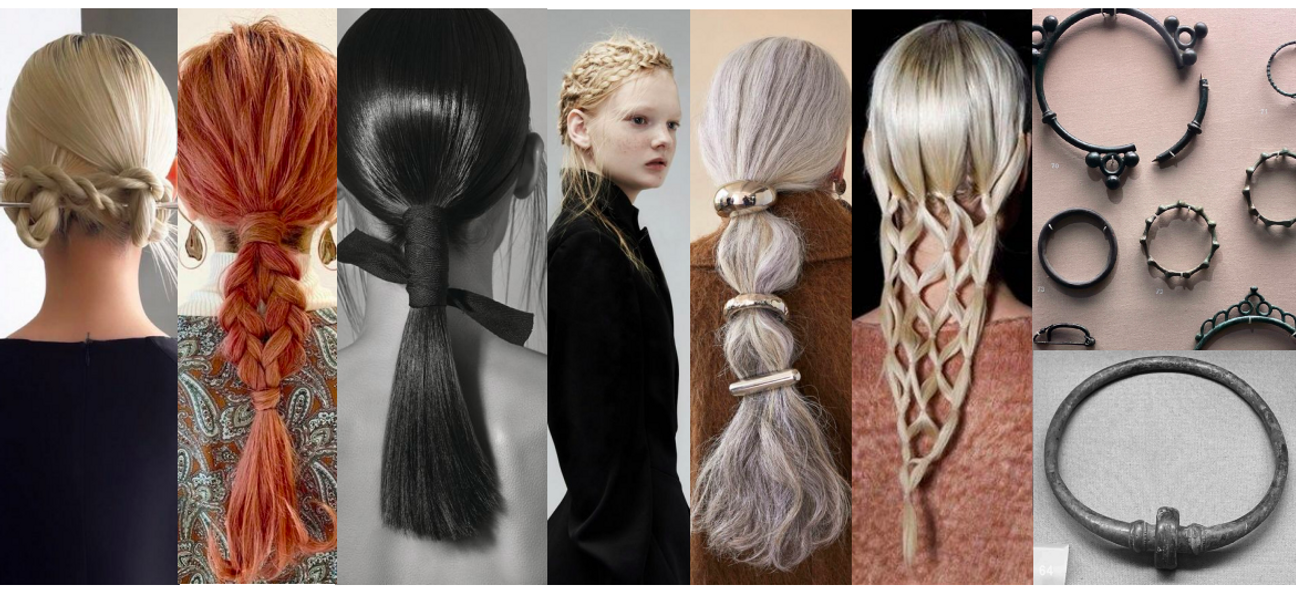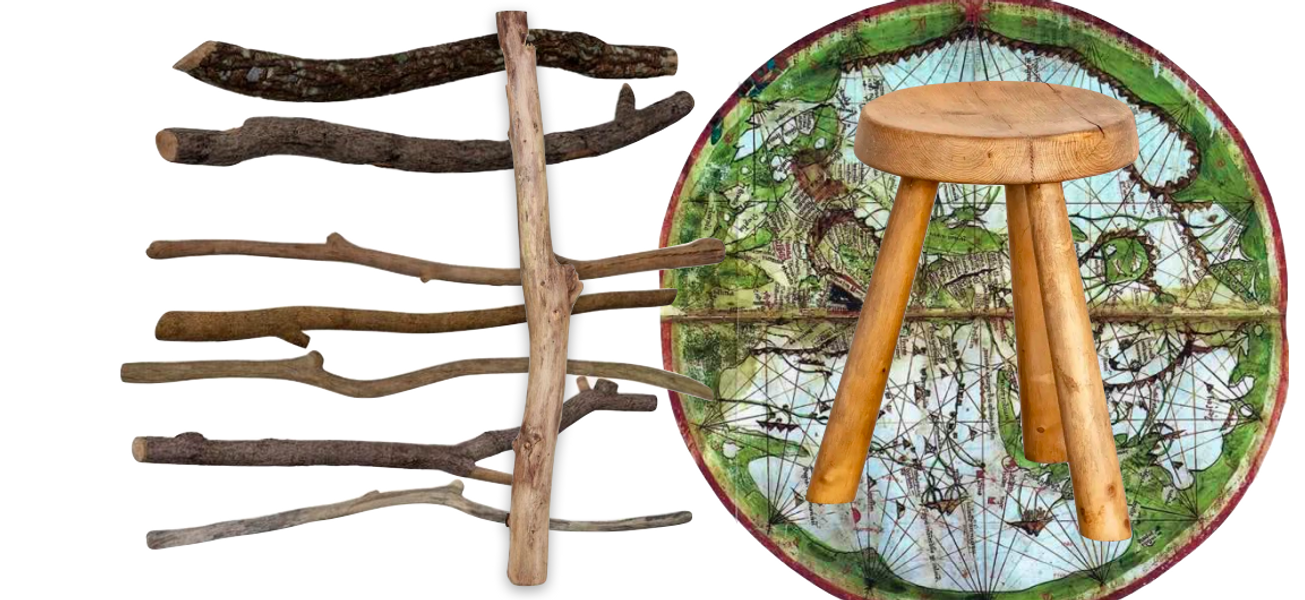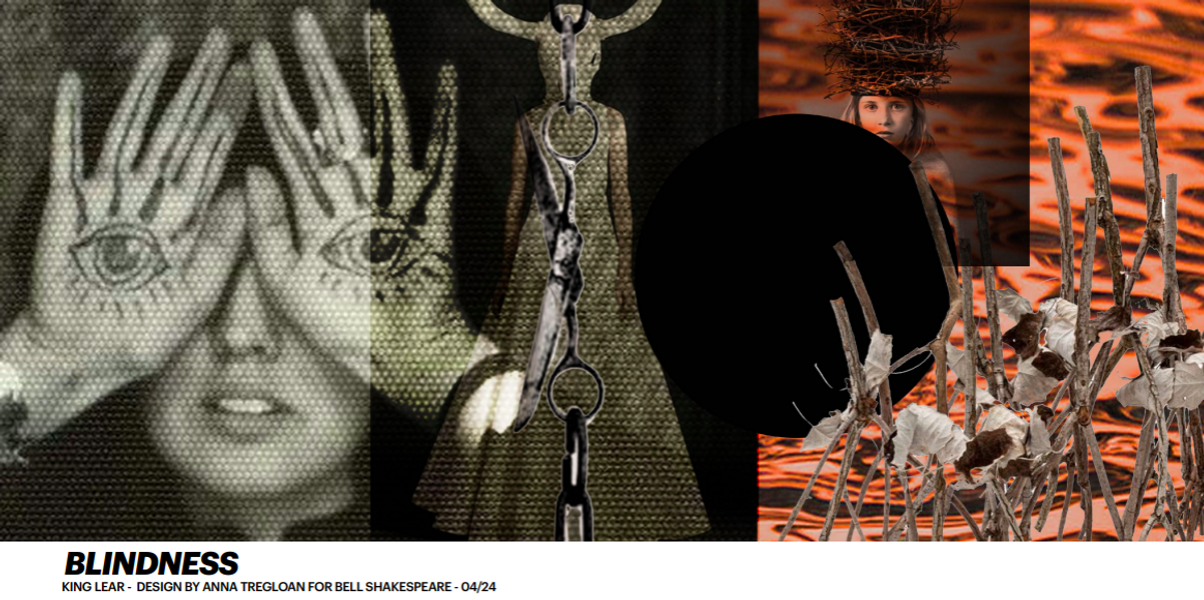

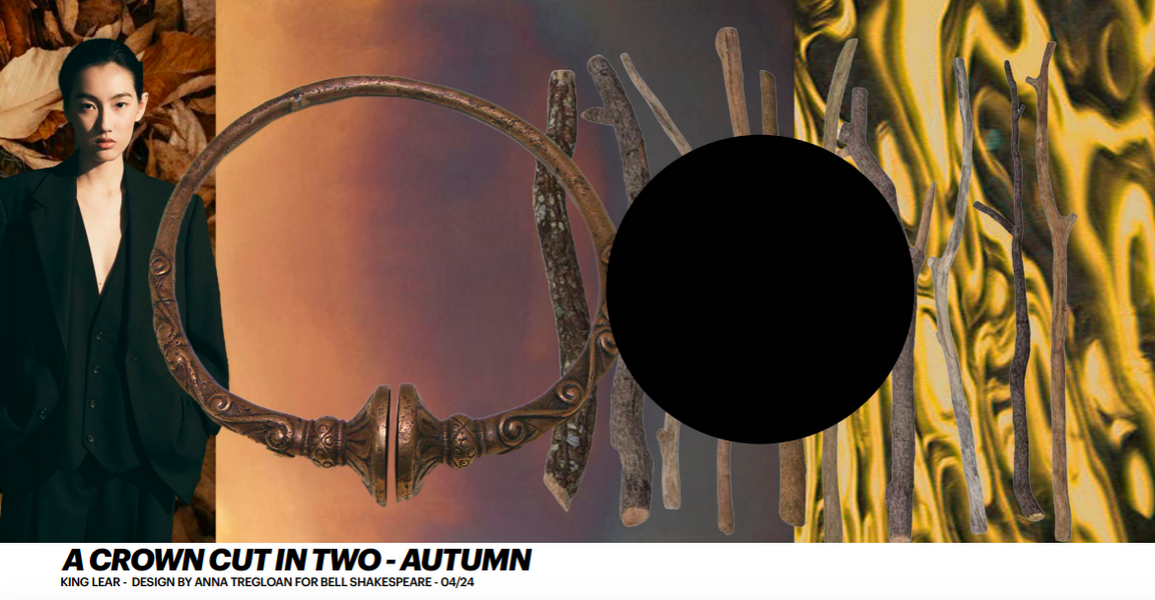
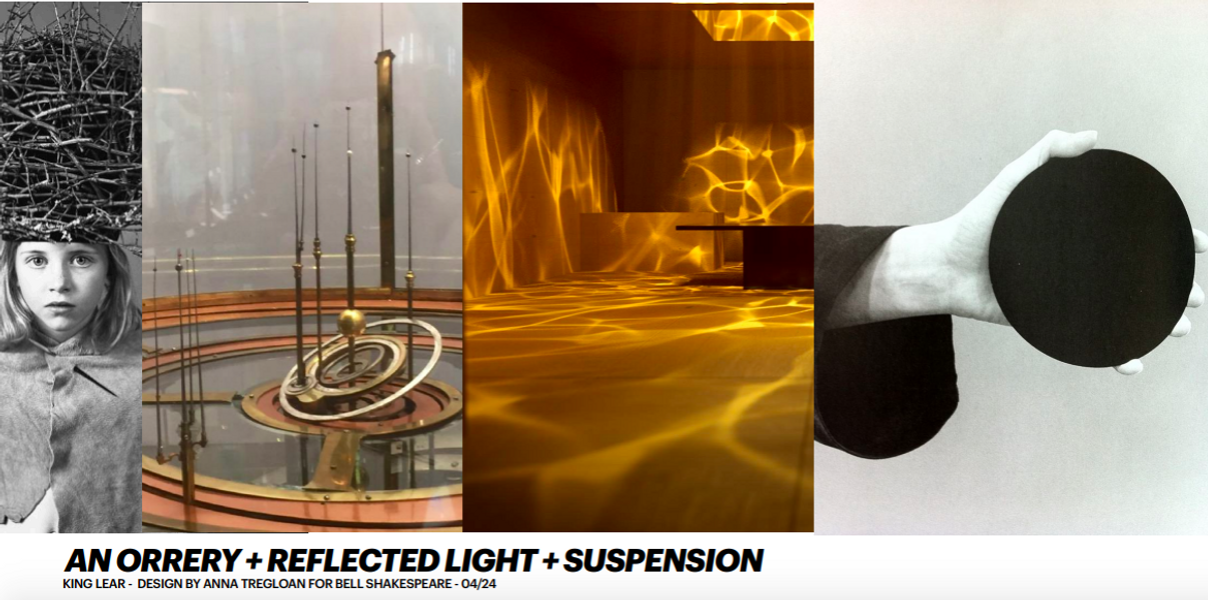
King Lear
Take a look at Director Peter Evans’ directorial vision, and Anna Tregloan's set and costume designs, for the 2024 production of King Lear.
Director Peter Evans, in collaboration with Set and Costume Designer Anna Tregloan, have set the play in an ahistorical context, merging the contemporary with elements of the past to create a collage of both. Incorporating elements of the pre-history era of the Iron Age, blended with the early modern and contemporary, this production allows for refractions of the past to blend with the present.
Shakespeare’s King Lear explores many binaries; custom, nature, truth, politics, kingship, fatherhood, authority, and religion. At its heart, it is a Pagan play written by Shakespeare for a Christian world.
Traditionally, King Lear is played out in productions in an epic scale. In this production, the set and audience experience is designed to be intimate, informed by the unique space of the Neilson Nutshell theatre. Evans and Tregloan seek to honour the epic nature of the play, while distinguishing the philosophical ideas explored in the text from the sheer scale of the world. Performed in the round, the set will extend out over the whole audience, incorporating them with suspended objects overhead that thread reality and unreality. This will allow the playing space to conceptually spread out to the walls of the room, providing a three-dimensional immersive experience.
The dominant colors of the production are gold, contrasted against the black of the costumes and a central black circular void. This creates a backdrop for the seasonal palette of Autumn and Winter, with shades of burnt orange, dark green, and grey.
Nigel Poulton (Movement, Fight and Intimacy Director) delivers ferocious physical fights, with Max Lyandvert’s (Composer and Sound Designer) music and sound design creating a powerful and haunting score for the production.




Anna Tregloan’s set design takes inspiration from astronomy, light, and reflection. The design is inspired by the 17th century orrery, a mechanical model of the solar system. The theatre space is bedecked with golden orbs, strung along concentric tubes which spiral around a central brass disk hung above the stage.
This stylised interpretation of an orrery overhangs the reflective gold-paneled sphere floor, offset against a central orb of dark material. The center of the stage is pitch black, evocative of a black hole, something that sucks in matter and absorbs all other light. This is symbolic of the rupture of the natural order caused in the opening of the play. This design aligns with the opening scenes of the play, where King Lear interrupts the natural order of succession, creating a political void and power vacuum by dividing his Kingdom.
The stage is framed by four towering golden thunder sheets, that stand floor to ceiling in each corner of the theatre. These have been incorporated into the sound design to create a surround sound auditory atmosphere.
The props are made of simple, untreated wooden components as a nod to the Pagan world of the characters. These include three-legged stools, a bed, stocks, and a staff.
The many gold and bronze elements of the set interact with the lighting design, creating an array of reflective and glittering surfaces. This interplay of textural light refraction creates a sense of unreality, destabilising the senses which is indicative of the characters’ mixed motives and agendas.
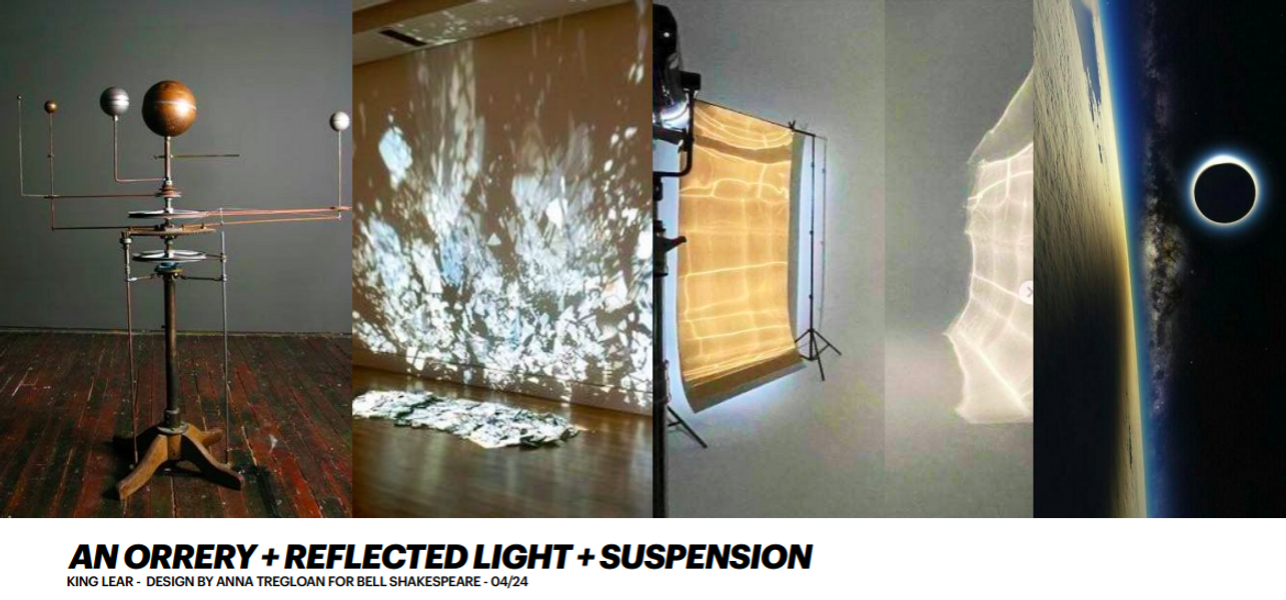
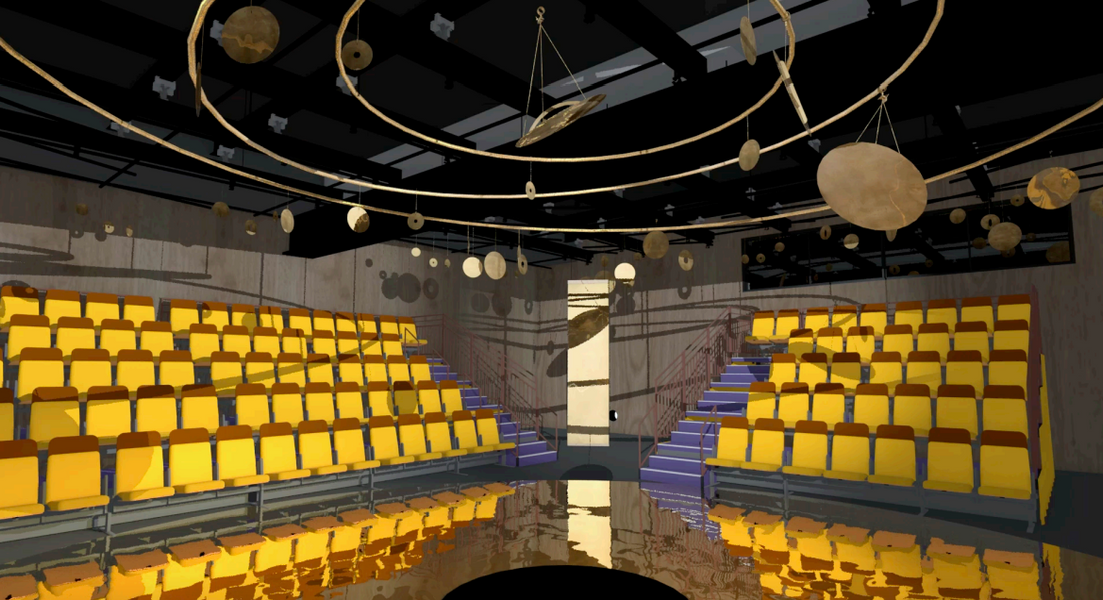


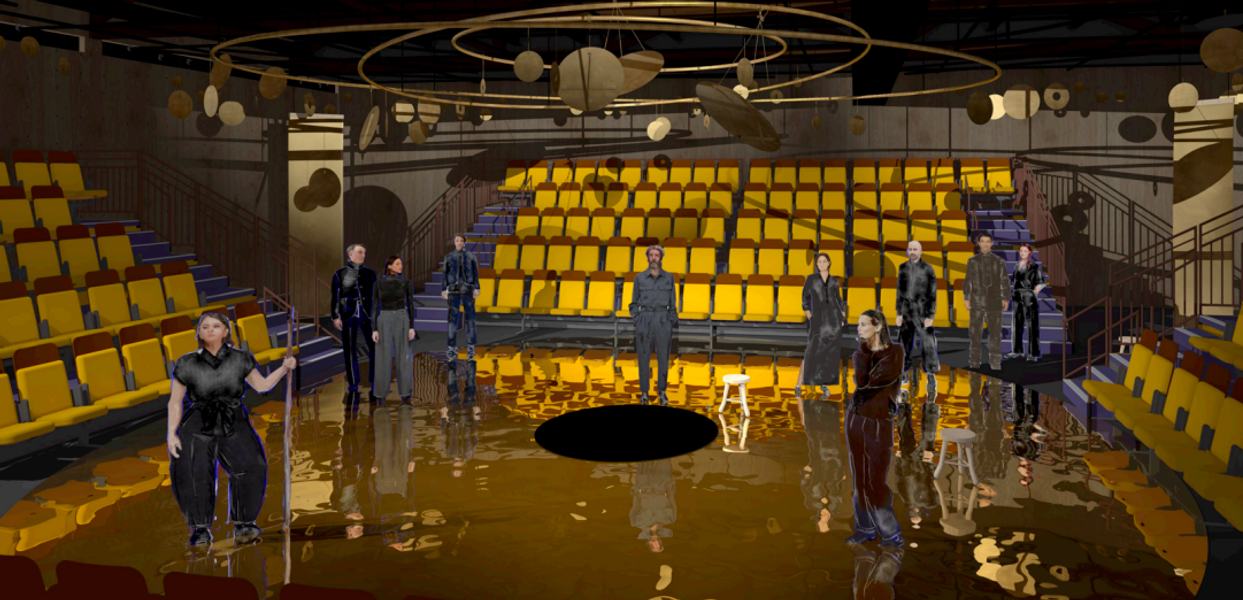
Within this production, the costume pieces are drawn partially from the early modern and prehistory era, built upon a contemporary foundation. The actors begin in black costumes, inspired by a formal urban aesthetic. This will be added to across the play, with shawls and capes draped over the urban blacks, worn to create different silhouettes. These will be held together with distinctive jewelry, broaches, and hair braids as a nod to Pagan influences.
Contrasted against these contemporary elements will be a number of ritualistic costume pieces.
When Edgar steps into his Poor Tom persona he cites the “Bedlam beggars”, a reference directly from Shakespeare's time when homeless people would feign ‘madness’ to escape prison or workhouses. Poor Tom’s costume is therefore based on paintings from that period, dressed in white scraps and ribbons of fabric.
The Fool’s costume is inspired by accounts of historical Pagan fools. The character wears a deep red smock with wooden toggles and is adorned with cow bells.
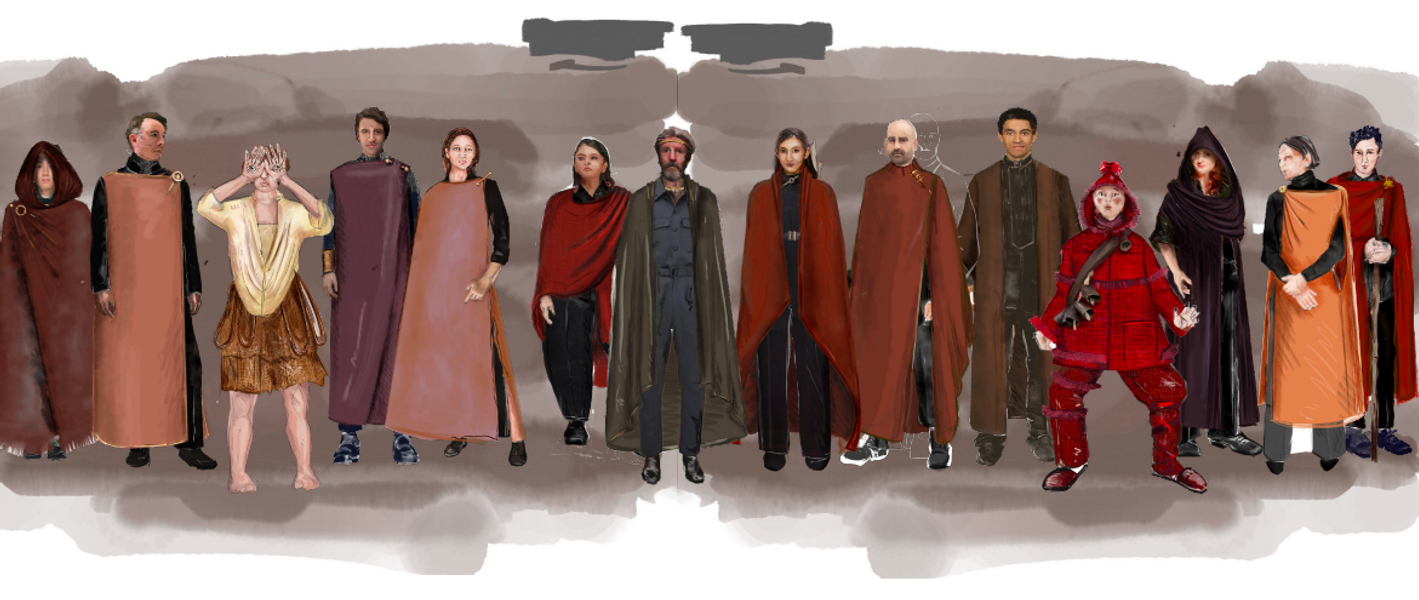
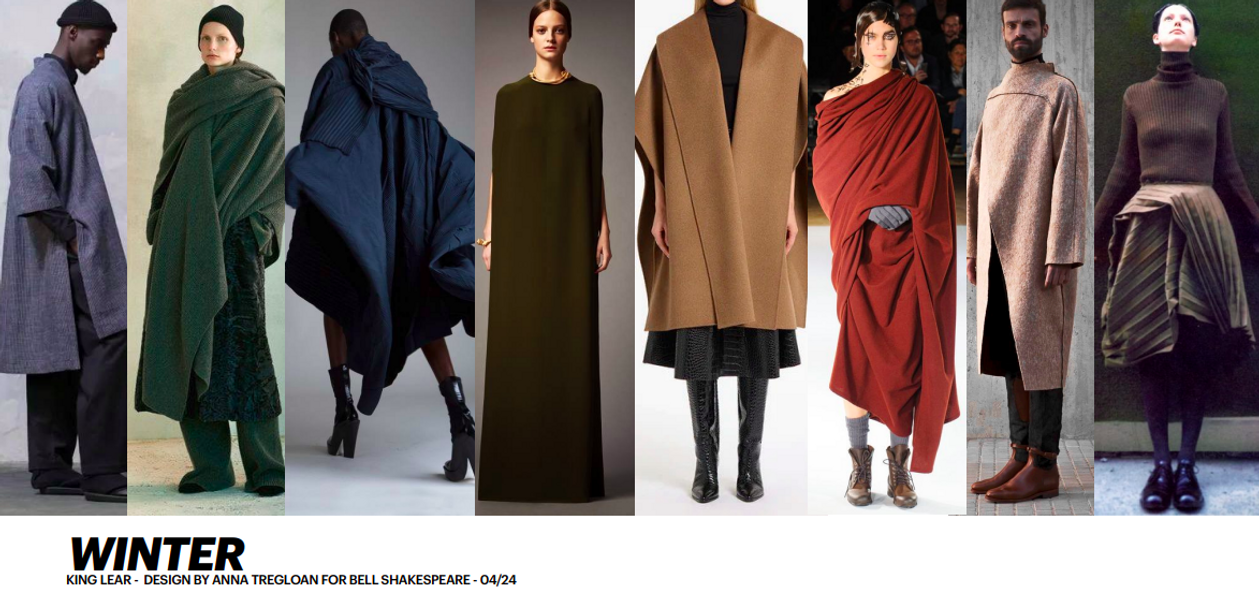
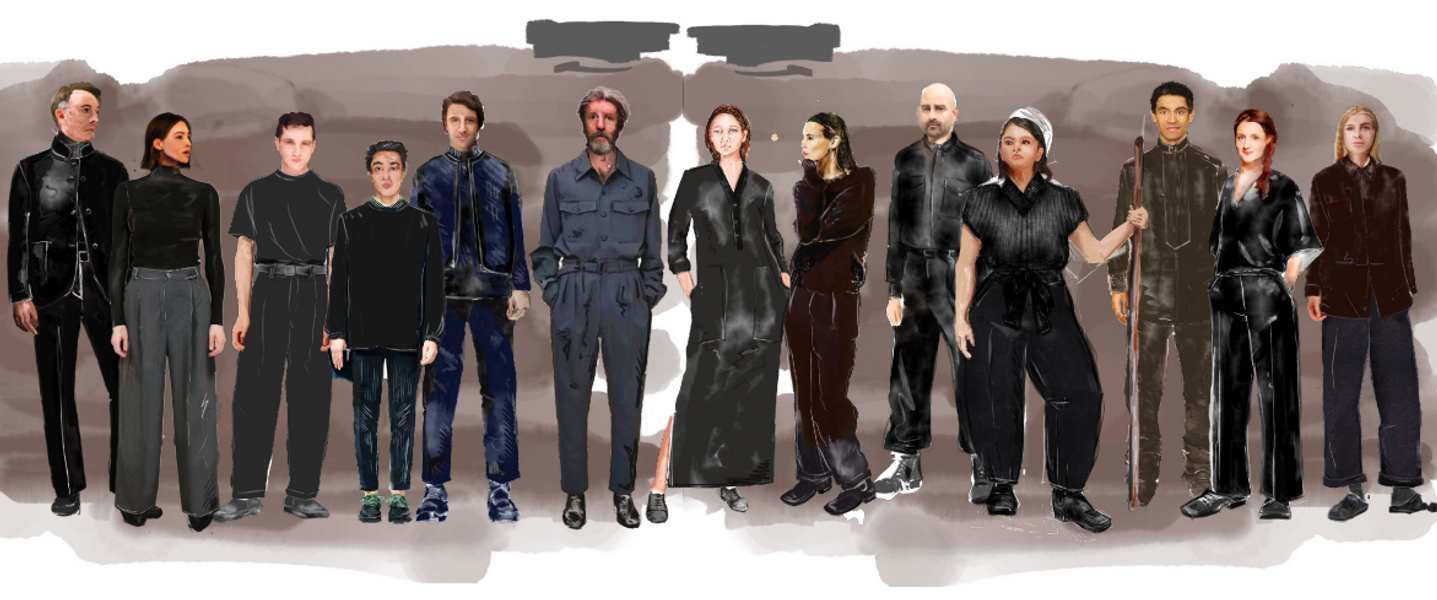
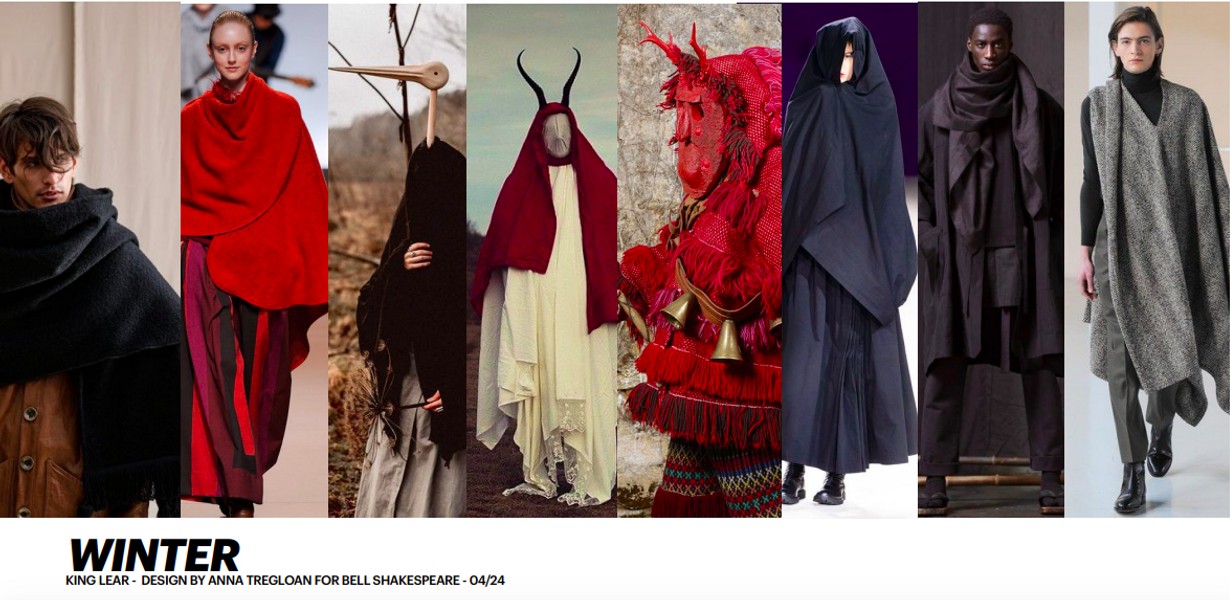

The styling of Goneril, Regan and Cordelia’s hair is evocative of a crown, informed by the intricate braids worn by women in the Iron Age.
In Shakespeare’s time, nakedness, madness, and vulnerability were often conflated, and this play has textual references to all, specifically relating to Lear and Edgar who inhabit opposite states of undress as the play progresses. Stylistically, Evans’ production will focus on the emotional vulnerability of nakedness as opposed to a physical state, to allow the power of conceptual nakedness to be explored.
